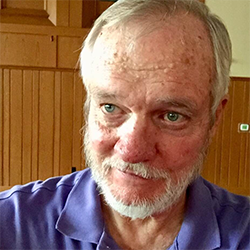Property values are the engine that drives prosperity for those of us in the asset class. Indeed, great fortunes have arisen through acquisition and a judicious use of credit. OPM-other people’s money-has leveraged wealth into clever hands willing to risk pain for gain and to develop property to what has been called “its highest, best use.”
The credit structure that supports this ediface of wealth has derived from taxpayer funds. Banks borrow at low rates from taxpayers who fund the Federal Reserve and loan it back to them at higher rates leveraged as much as ten times. This is due to a requirement that they keep only ten cents of every dollar deposited on hand to meet withdrawal requirements. (Any unusual withdrawal demands a given bank can meet by borrowing from other banks to cover it.)
Unfortunately, this system, which has enabled people of modest means to join the asset class, has become wobbly and the engine of prosperity has spewed out as exhaust people who have lost everything.
Sometimes they are strivers unable to stand the stress of moving up the ladder and seek refuge in the chemical realm; alcohol, opioids and the like and their lives deconstruct on the long road to ruin.
Sometimes it’s people who have lost jobs, sustained a costly illness, or whose families have broken apart.
Sometimes it’s people simply too crazy to function or support themselves on the ladder.
Whatever the reason, people are becoming homeless at an alarming rate. I recently saw a statistic that as many as 1% of the population of California is homeless.
In Los Angeles, it’s vast tent cities and people living in their cars. In New York its underground in abandoned infrastructure tunnels. In Washinton, DC its camping on steam grates and alleyways. In Atlanta it’s under bridges, in vacant lots and abandoned houses.
Whatever they end up, it’s clear that their options are constrained by the rising costs driven by property acquisition in the asset class.
I have a proposal for this problem-a band-aid to be sure but one that can at least help our cities become livable again.
Affordable dwelling space for non-asset people is a problem that municipal governments try to address through tax policy, zoning requirements, jail, public housing, and bus tickets out of town. None of this has proven effective. City budgets are simply too strained and in the case of the latter-they creep back.
*What if everyone who finds themselves in this position could repair free to a tiny enclosure say, five feet by nine feet, roughly the size of two porta-potties and made of the same durable plastic?
*What if this structure contained an extruded shelf of three by seven feet for sleeping, under which could be stowed any possessions?
*What if it also had a toilet, extruded sink, and two by two shower all fed from a reservoir in the unit’s roof and draining to a waste tank beneath the floor?
*What if the space were insulated so that a tiny heater and fan could maintain a comfortable temperature with minimal energy?
*What if small, secure windows(12x16 casements or jalousies) with heavy-duty panes and screens) were on all opposing walls to generate a cross breeze?
*What if the door locked from the inside but could be accessed with a master key in emergencies?
^What if these units were clustered-say a maximum of thirty-in dead urban spaces; vacant lots, beneath overpasses, abandoned factory lots-wherever they are least likely to generate the NIMBY reaction inevitable in good neighborhoods-and relocatable based on changing conditions with a minimum of hassle?
*What if each cluster was manned by an off-duty policeman who would allot spaces first come first served-no questions asked-with at least half the units to be vacated daily? Drug use and/or weapons would be prohibited for obvious reasons.
*What if some units or possibly some clusters were designated long term, pending social worker involvement, family displacement, storm refugees, etc.?
*What if once a week a truck arrived bearing replacement units and, upon inspection, removed dirty or malfunctioning ones to a maintenance facility, where they were steam cleaned, reservoirs replenished and waste tanks emptied and any repairs effected?
*What if each cluster had a generator to light units and run fans, and a common area with a few picnic tables and perhaps a unit used as the attending policeman’s office?
*What if clubs, churches or individuals could adopt units and assist in its maintenance and upkeep?
*What if clusters could be used for social service and health assistance, and listed as fixed addresses for long term indwellers seeking jobs?
*What if the total cost per unit of fabrication, maintenance and management was far less than the cost per jail cell in a given metro area?
*What if these clusters were funded at cost by banks, who are after all funded at taxpayer cost for their other profitable lending?
*What if...If ifs ands and buts were good intentions, the road to hell ran straight and true?
Just sayin...
The DESIGN CONSUMER examines issues of design-be they objects,(buildings, appliances, landscapes, toys, furniture), or systems ( traffic flow, schools, banking and credit, public health)-all are designed and all are products the citizen consumer uses. In a given product, the DC will ask: What was it designed to do? Does it work? Is it pretty-that is-is it an elegant solution or your basic economy model? An architect by profession, the DC appreciates good design wherever he finds it.




